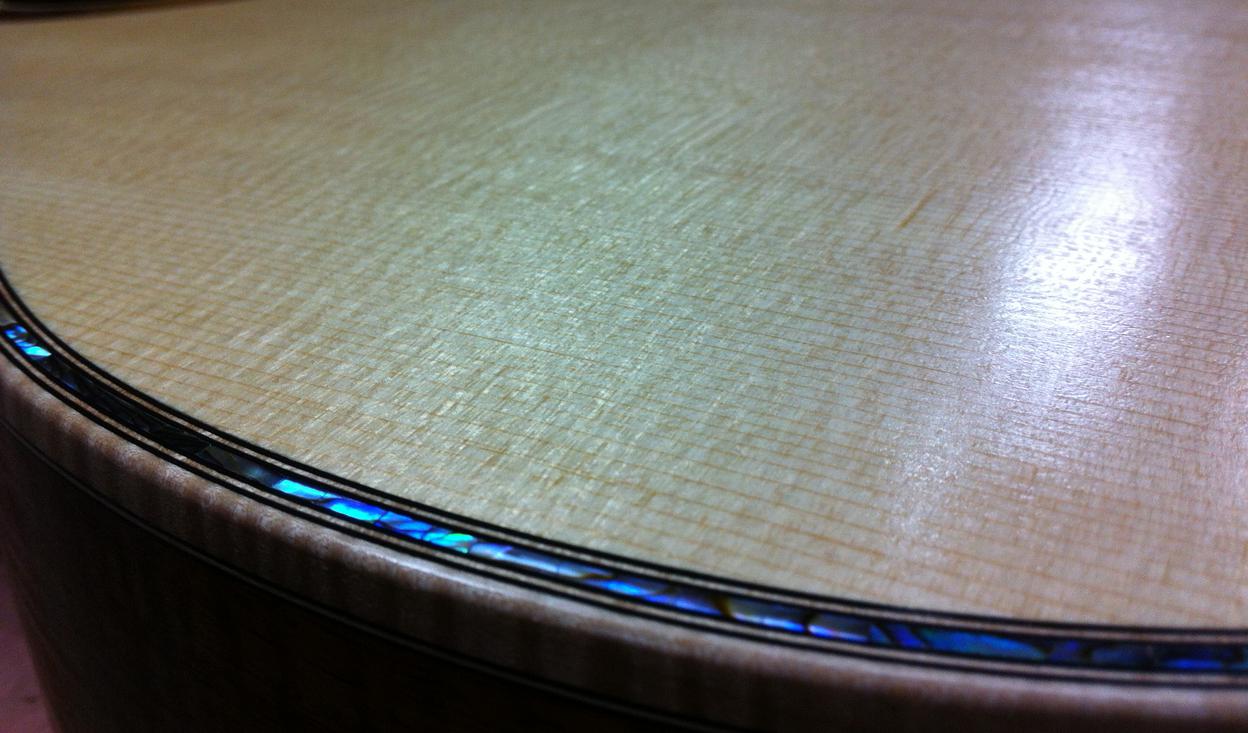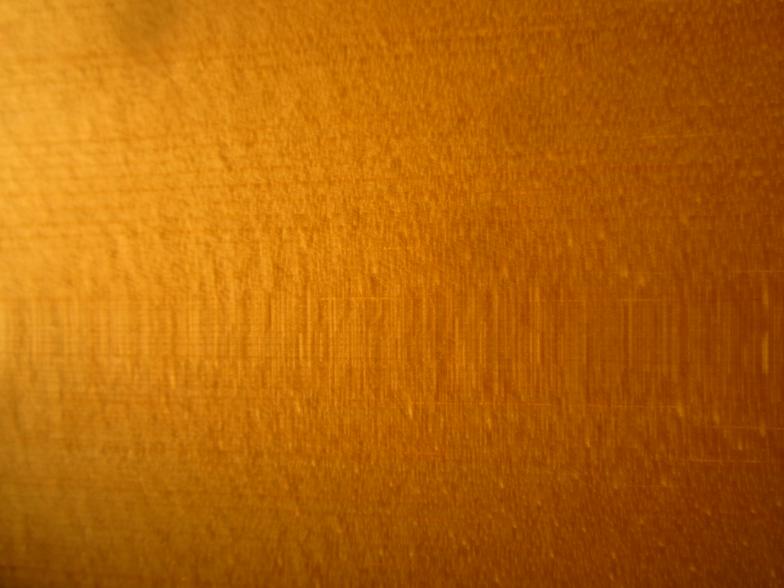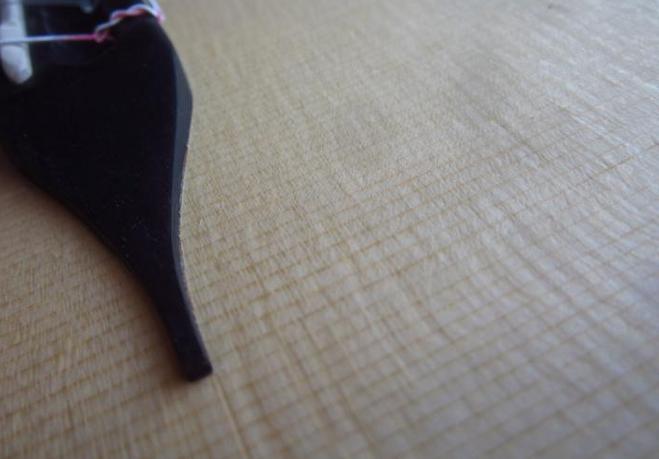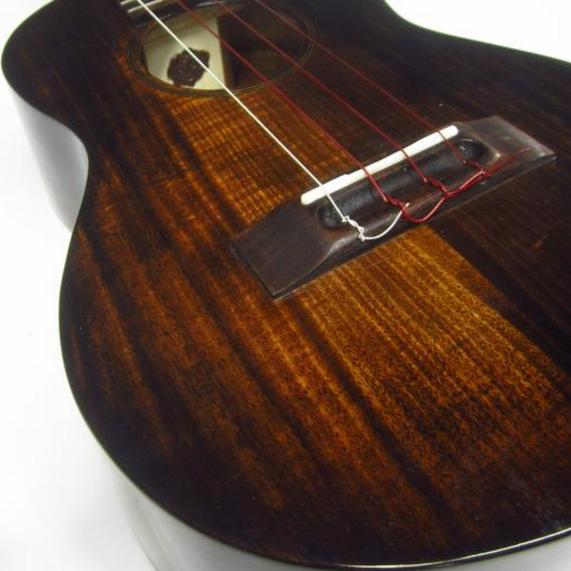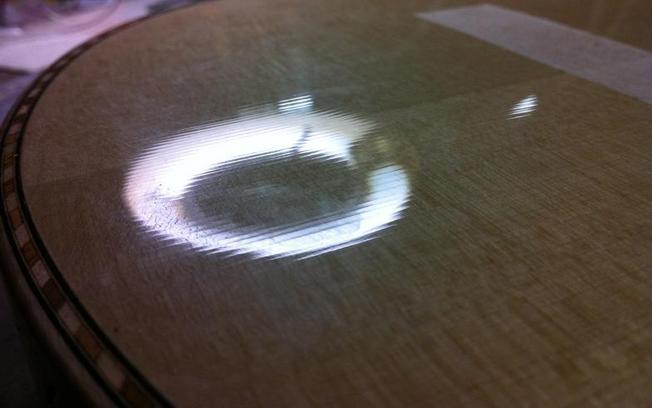Top Options~
Spruces:
~ European aka 'German' spruce (Picea excelsa and Picea abies)
European spruce is the premium top wood choice for fingerstyle playing. European spruce produces clear fundamental, deep bass response, and many subtle overtones. It has been described as a more 'rounded' balanced tone then Adirondack or Sitka.
~ Carpathian spruce
Same as European/German spruce but having grown in the Carpathian mountains.
~ Adirondack spruce, Red spruce (Picea rubens)
The wood used on pre-war American guitars. Adirondack gives a strong, clear, bright and punchy tone. It is a favorite among flat pickers
~ Sitka spruce (Picea sitchensis)
Alaskan grown, very strong and stiff and is tonally the brightest of spruces at the beginning of a new instrument. Sitka gives a strong attack, long sustain and many overtones.
~ Engelmann spruce (Picea engelmannii)
Creamy white and stiffer across then grain then sitka spruce while producing a warmer tone then Sitka. While a touch softer, Engelmann is very close in tonal and visual properties to German spruce, so much so that it was sold by American loggers to European wood companies who then sold it back to the world as German spruce!
~ Lutz spruce -
A regional hybrid species of Sitka & Engelmann from British Columbia.
~ Moon spruce
A centuries old method of harvesting European (or any) spruce). Moon spruce is said to be stiffer and lighter due to following harvesting methods developed over centuries by loggers in response to superior traits of such woods noticed by luthiers and other woodworkers such as house builders.
~ Bear Claw spruce is available in some species.
Top choice is the most important element on an instrument. It is the soul, it is everything. All my tops are either Master grade or AAAA as standard and only the lightest, stiffest tops (and braces) are used on my instruments resulting in a truly responsive instrument. Hide glue is used for all top bracing as of 2014.
A short guide to immediate tone developing into an aged tone:
~ Spruces start out with a brighter tone, and can take a few good years to develop into a more mature tone, always developing with age.
~ Western Red Cedar is gifted with immediately possessing a matured, 'aged', and 'warm' sound, but does not ever develop further then this with age.
~ Redwood falls between Spruce and Cedar in terms of immediate tone and aging process.
All the following top options can be used for both Guitars and ukuleles ~
~ Medullary ray example on German Spruce They run in the opposite direction to the normal grain and indicate a perfectly quarter sawn top ~
~ Beautiful 'silking' medallury rays in Engelmann spruce ~
~ Redwood top ~
~ Beautiful silky medullary rays on Engelmann spruce ~
~ Tasmanian Blackwood Top with hand rubbed sunburst ~
~ Finish telegraphing is very desirable as it shows that an instrument has a thin finish, causing no dampening effect ~
Redwood & Cedars:
~ Redwood & Sinker Redwood (Sequoia sempervirens)
An excellent tonewood with a tone between spruce & cedar. Sinker Redwood is identical wood but salvaged from rivers after sinking in the 1800's.
~ Western Red Cedar (Thuja plicata).
Cedar is the traditional choice for classical guitar tops for good reason. It is ideal for fingerstyle playing on guitars and ukuleles. It has an immediate mature sound but does not develop or 'age' further in tone like spruce or other woods.
~ Port Orford Cedar (Chamaecyparis lawsoniana)
In the Cypress family. Stiffer and lighter then spruce! 'POC' makes an fantastic top with tight grain and stiffness across the grain.
~ Alaskan Yellow Cedar (Cupressus nootkatensis)
In the cypress family. Similar to Port Orford Cedar in being very light and very stiff, it has a strong tone with a bright attack and very tight grain.
Hardwoods ~
Hardwood topped instruments produce a 'warmer' 'woody' (ie, more lows and mids) sound with a strong punchy fundamental, and with less overtones then soft topped instruments. Mostly associated with Hawaiian music and some early blues players, hard topped instruments are an excellent choice for such a sound. These three woods all sound very similar for tops.
~ Koa.
~ Tasmanian Blackwood.
~ Mahogany.
